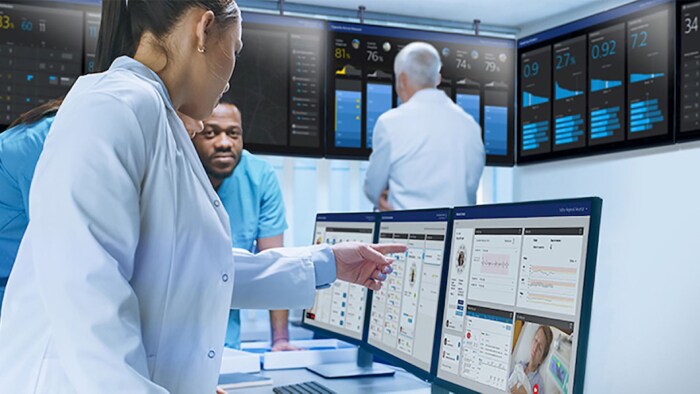Three steps to wider telehealth adoption in Singapore


Jun 10, 2019 - reading time 6-7 mins
By Ivy Lai Country Manager, Philips Singapore Ivy Lai is the Country Manager for Philips Singapore. She is responsible for overseeing Philips Singapore’s transition strategy from a consumer electronics company to a leader in health technology.

With the ability to connect clinicians and patients to each other remotely, telehealth has the potential to make healthcare borderless. In doing so, it can improve overall healthcare workflows and outcomes, as well as provide patients with better access to care. Our Future Health Index found that Singapore has made significant strides in embracing this technology in recent years, however there are still challenges that need to be overcome for telehealth to be used as widely as it could be. In this article, we share three recommendations for Singapore to use for telehealth to reach its full potential.

Globally, growing and aging populations, rising rates of chronic diseases and skills shortages are putting healthcare systems under immense pressure. In Singapore, for example, the government expects the population of people aged 65 years and older to double by 20301.
To help medical resources go further, and to provide better care for all, telehealth is being heralded as a silver bullet.
The World Health Organization describes telehealth as the use of telecommunications and virtual technology to deliver healthcare outside of traditional healthcare facilities – extending the reach of high-quality care and in-depth expertise to places like the home, as well as to remote and underserved communities. While the industry is still relatively new, it is estimated that the global telehealth market will reach USD$19.5 billion by 20252.
Benefits of telehealth
Telehealth has numerous benefits for both healthcare practitioners and patients.
Firstly, it enhances access by bringing care within reach of more people. For example, it can enable remote patient monitoring whereby patients can receive diagnosis, treatment or condition management from the comfort of their homes, without having to physically see a doctor or stay in a hospital. This is great for providing care for elderly and less mobile patients, as well as people living in remote areas where healthcare facilities are not easily accessible.
Telehealth can also boost efficiency. By enabling care to be delivered quickly across time zones and geographies, it can reduce overall costs and promote better outcomes. For example, it can promote collaboration by enabling the secure sharing of medical information between clinicians at different locations. In practical terms, this means that travel time of consultants can be cut down or eliminated, to be reallocated to patient care.
Lastly, it also supports patient satisfaction. Telehealth enables people to receive high-quality care to fit a variety of needs on demand, regardless of their locations. The ability to provide care without the boundaries of time and location can also boost patient experiences due to factors such as reduced waiting times.
A strong start in Singapore
The good news is that in Singapore, two-thirds (64%) of healthcare professionals currently use some form of connected care technology for diagnosis, treatment or management of their patients’ conditions, according to our Future Health Index (FHI). This rate is higher compared to developed nations like the United States of America (46%), Germany (45%) and France (40%). The growing adoption of telehealth is also driven by an ever more connected general population who is increasingly more prepared to embrace technology to improve their healthcare. Our 2018 FHI report found that in Singapore, half of the general population (50%) has used some form of connected care technology already to monitor health indicators such as weight, blood sugar levels, and medication intake.
Three steps for better telehealth adoption
While it is positive to see that more healthcare practitioners and patients are embracing telehealth, there is still a long way to go before it reaches its full potential. Key to this will be for countries to ensure that they have the right policies and frameworks in place to support it, as many often fall behind when it comes to ‘new’ technologies. In the case of telehealth, our FHI report found that many healthcare systems have not yet formalized reimbursement models and frameworks for data sharing, which are needed for its wider adoption and long-term success. To widen the adoption of it in Singapore, the government and the healthcare sector can take the following steps.
· Telehealth solutions require a substantial initial investment, so it is important for adopters to have a long-term mindset. Institutions may wish to start small to test the solutions first and then scale up because it may take time for the real value of the implementation to become apparent.
· As telehealth is rolled out, policy-makers will also need to re-think traditional reimbursement models. Reimbursements are currently often tied to the number of patients physically visiting a doctor or facility. As telehealth enables patients to receive care remotely, the solutions could negatively affect the income of healthcare professionals and institutions unless traditional reimbursement models are changed. It is good to see that Singapore has already taken a step in the right direction with the Ministry of Health starting to pivot away from a fee-for-service model with its Beyond Quality to Value imperative.
Moving forward, instead of only looking at volume, Singapore’s future reimbursement model must look at the value and positive outcomes telehealth delivers, and these must be tracked and measured in order to justify spending.
Healthcare professionals in Singapore are amongst the least collaborative according to the 2018 FHI report. One aspect that may be holding them back is that as the industry uses different technology, the data being collected, and the systems being used, may differ too. To realize the network benefits of seamlessly connecting clinicians across multiple locations, data needs to be collected and stored in a consistent way, at least at the level of individual specialties or practice areas. This standardized approach to data will then make it easier for doctors to share the information with each other, as they – and their systems – will speak the same language and adhere to the same core approaches when it comes to use of telehealth locally.
While more standardization will be needed, it is equally as important for healthcare systems and practitioners to understand that telehealth will not look the same everywhere as it will be dependent on the local infrastructure and environment. This means that solutions that had proven positive results in one country may need to be modified for appropriate use in Singapore. Equally, if Singapore wants to expand their telehealth reach outside of the country, they too need to take a localized approach.
While the benefits telehealth brings to clinicians and the general population are clear, more work needs to be done in the healthcare sector to agree on a common language, framework and new reimbursement model for the technology to reach its full potential. 2Transparency Market Research, Telehealth Market - Global Industry Analysis, Size, Share, Growth, Trends, and Forecast, 2017–2025, https://www.transparencymarketresearch.com/pressrelease/telehealth-market.htm
1 https://www.gov.sg/news/content/singapore-feeling-impact-of-rapidly-ageing-population



